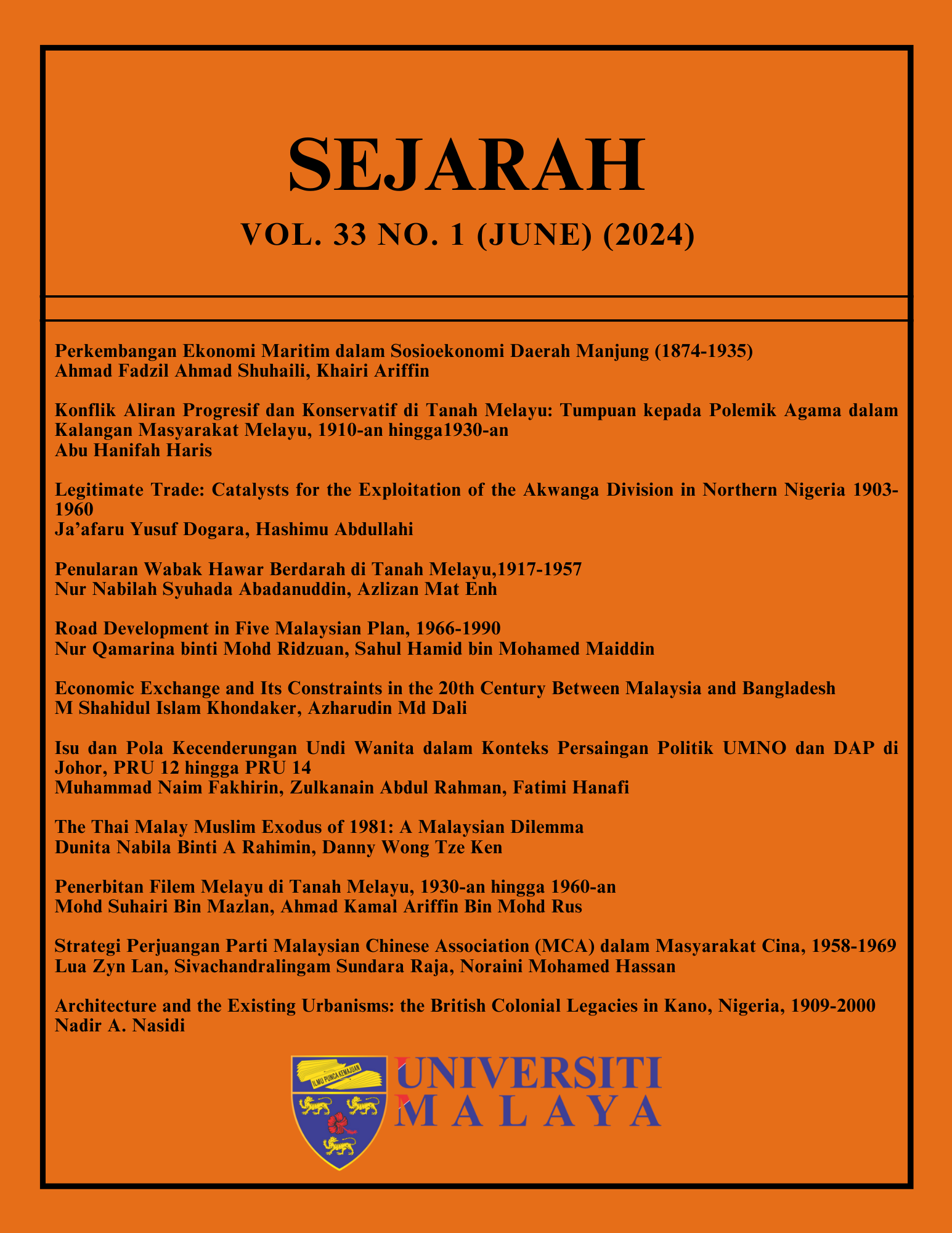Architecture and the Existing Urbanisms: The British Colonial Legacies in Kano, Nigeria, 1909-2000
DOI:
https://doi.org/10.22452/sejarah.vol33no1.10Keywords:
Architecture, Urbanisation, Colonial Legacies, Kano, PolicyAbstract
Hausaland to which Kano belongs had its unique age-long architectural designs rendered in a radial settlement pattern. However, with the British colonial conquest and the enactment of new town planning policies in 1903, a grid pattern of settlement was introduced, especially in the Government Reserved Areas (GRAs). This development further led to the promulgation of the British Township and Public Health Ordinances of 1917, the Housing and Town Planning Acts of 1909, as well as the Town and Country Planning Ordinance of 1946 to enforce not only western architectural housing planning but also to segregate the natives along land-uses, population density and status. Hinging on both primary and secondary sources, this article examines issues revolving around the transformation of architecture and town-planning development in Kano due to British colonial policies, which left lasting legacies in the peoples’ choice of building materials, architectural designs and urbanisation. Emphasis is given to monumental buildings within the ‘traditional’ city and the emergence of British colonial buildings and settlements. Contrary to the notion that the British colonial government had not done anything positive in Africa, this article finds out that it had contributed immensely, especially in developing Kano's ‘traditional’ city and creating modern and rhythmic cities in the continent amidst its existing urbanisms. The article concludes that urban development and planning contributed immensely to the supremacy of the British colonial government over the Emirate, a struggle inherited by the Kano State government.
Received: 1 August 2023
Reviewed: 15 August 2023
Accepted: 30 June 2024


